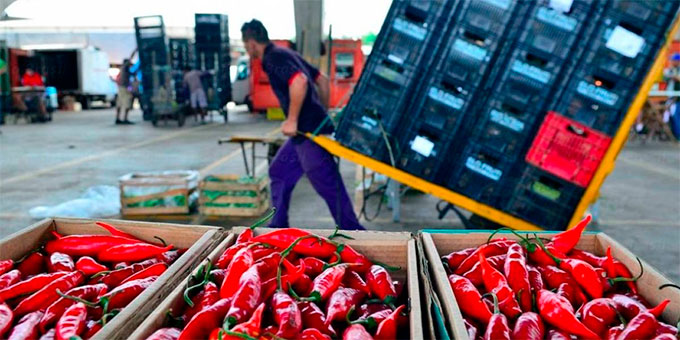A warehouse is nothing more than a place for the exhibition and commercialization of products, in the case of CEAGESP vegetables. See the commercialization of the Ceagesp Wholesale and the Varejão Ceagesp and everything about warehouses and warehouses. The Company, which centralized the supply of much of the country, quickly consolidated its operations in the areas of marketing vegetables and grain storage.
In 1977, when CEAGESP expanded the Pavilhão Mercado Livre do Produtor (MLP), built in 1964 in the Entreposto Terminal São Paulo (ETSP), in the capital of São Paulo, the record of 6.2 thousand tons of products sold in a single day. The brand outperformed the largest market in the world, Paris-Rungis, in France.
DEPOSTO CEAGESP SP
Today, the ETSP, which opened in 1966, is considered one of the largest wholesale marketing centers on the planet, with an average movement of 280 thousand tons of fruits, vegetables, fish, flowers and various (garlic, potato, onion, dried coconut and eggs) every month.
In the late 1970s, the company began the process of decentralization, with the opening, in São José do Rio Preto, of the first commercialization unit outside the capital. Currently, the Company maintains 12 supply centers in the countryside, close to production and consumption centers.
At the same time, CEAGESP also invested in customer service. In 1979, it created the first retail store with fresh products at controlled prices. In 1983, grocery stores came to sell vegetables per kilo at a single price. In 1984, the trains appeared, which functioned as mini-varejões. Finally, in December 1994, the night varejão was implemented at the ETSP.
Warehousing is classified as a warehouse or sale of goods, where it is a meeting point for producers and traders, contributing to the flow of crops, moving wholesale and retail trade and lowering costs for the consumer.

The São Paulo Terminal Warehouse (ETPS) has a daily circulation of 50 thousand people and moves about 250 thousand tons of fruits, vegetables, fish, flowers and plants per month, corresponding to approximately 3 million tons per year. Therefore, it can be said that it is responsible for 60% of the supply in Greater São Paulo. Where it represents a wide variety of products, coming from 1,500 Brazilian municipalities and 18 countries.
Another very important activity developed by the Companhia de Entrepostos e Armazéns Gerais (CEAGESP) is the warehouse (deposit or sale of goods).
In the case of CEAGESP, its 13 wholesale warehouses function as a meeting point for producers and traders. The units in the capital and in the countryside operate as distribution channels for regional production for open-air markets, supermarkets, grocery stores, restaurants and fruit and vegetable distributors. See where they are:
- CEAGESP Araçatuba
- CEAGESP Araraquara
- CEAGESP Bauru
- CEAGESP Franca
- CEAGESP Guaratinguetá
- CEAGESP Marília
- CEAGESP Piracicaba
- CEAGESP President Prudente
- CEAGESP Ribeirão Preto
- CEAGESP São José do Rio Preto
- CEAGESP São José dos Campos
- CEAGESP São Paulo
- CEAGESP Sorocaba
Difference between Warehouse and Warehouse
Warehouse is the name given to the place where different types of products are sold, in the case of CEAGESP it is where the sale of fruits, vegetables, vegetables, fish and flowers occurs. Already the warehouse is like the stock of non-perishable foods like sugar and grains.
